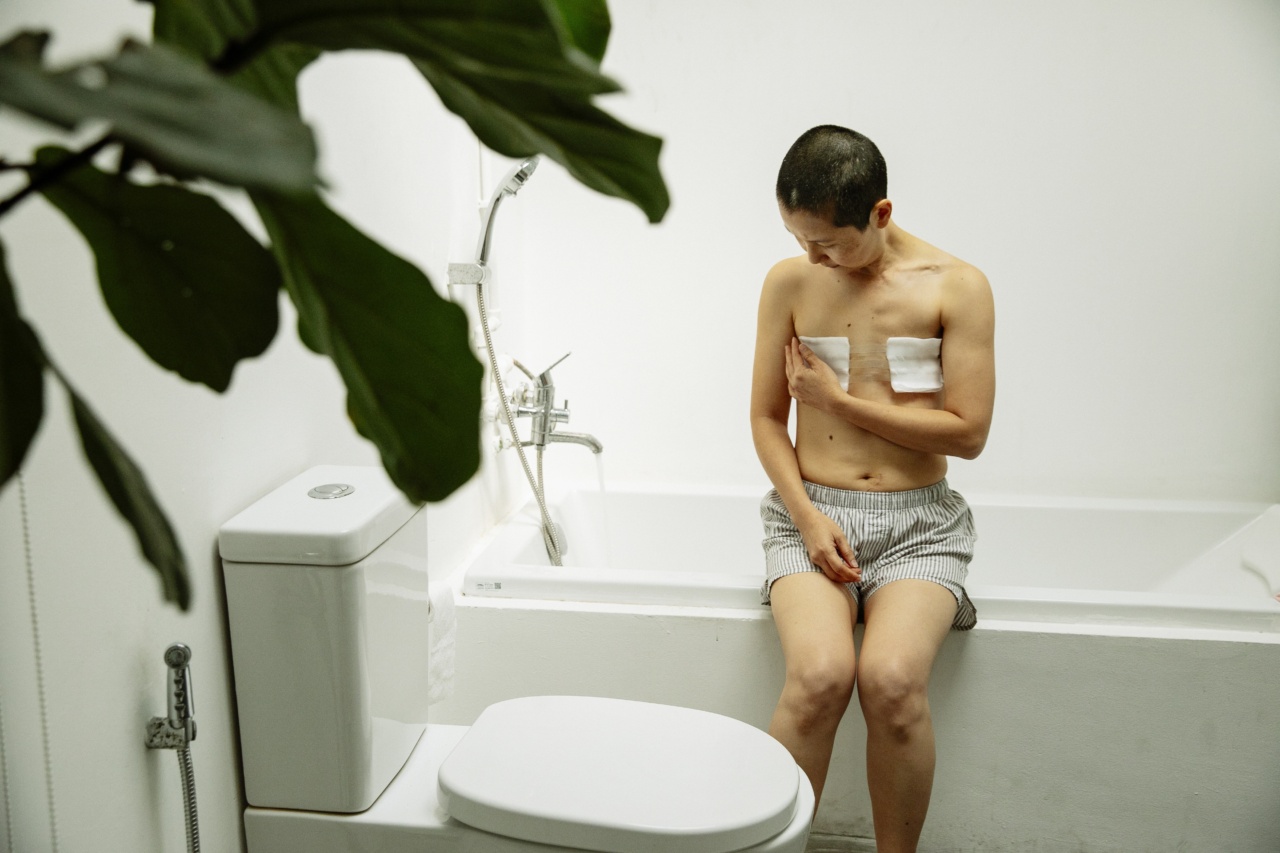Breast cysts are fluid-filled sacs that develop in the breasts. They are quite common, especially among women who are approaching menopause. While cysts are usually benign, their presence can cause discomfort and pain in some cases.
The symptoms of breast cysts can vary from person to person. Some of the common symptoms include:.
- Small, round lumps that are smooth and easily movable
- Tenderness or pain in the affected breast
- Swelling or lumpiness in the breast tissue
- Changes in breast size or shape
- Increase in breast pain or tenderness before menstruation
- In some cases, clear or slightly cloudy fluid may be discharged from the nipple
Diagnosis of Breast Cysts
If you notice any of the aforementioned symptoms, it is important to visit a healthcare professional for a proper diagnosis. The following methods are commonly used to diagnose breast cysts:.
- Physical examination: The doctor will examine your breasts and ask about your medical history. They may also recommend further tests to confirm the diagnosis.
- Mammogram: A mammogram is an X-ray of the breast that can help identify the presence and characteristics of cysts.
- Ultrasound: This imaging test uses sound waves to create detailed images of the breast tissue, allowing the doctor to determine if a lump is a cyst or a solid mass.
- Fine-needle aspiration: In this procedure, a thin needle is inserted into the cyst to extract fluid for analysis. This helps rule out the possibility of cancer.
- Breast biopsy: If the fluid extracted from the cyst appears abnormal or if a solid mass is found, a biopsy may be performed to check for cancer cells.
Treatment Options for Breast Cysts
In many cases, breast cysts do not require treatment as they often resolve on their own. However, if a breast cyst is causing significant discomfort or if the fluid is suspicious, the following treatment options may be recommended:.
- Monitoring: The doctor may advise monitoring the cyst through regular follow-up appointments and imaging tests to ensure it is not growing or changing.
- Drainage: If a cyst is large and causing discomfort, the doctor may suggest draining the fluid using a thin needle. This procedure is known as cyst aspiration or needle aspiration.
- Hormonal therapy: Birth control pills or other hormonal therapies may be prescribed to help regulate hormone levels and prevent the formation of new cysts.
- Surgical removal: If a cyst is recurrent, painful, or suspicious, the doctor may recommend surgical removal. This is typically done using a local anesthetic and a small incision.
- Medication: Over-the-counter pain relievers, such as ibuprofen or acetaminophen, can help alleviate breast pain associated with cysts.
Self-Care Measures for Breast Cysts
In addition to medical treatments, there are certain self-care measures you can take to find relief from breast cysts:.
- Wear a supportive bra: Wearing a well-fitted, supportive bra can help reduce breast pain and discomfort.
- Apply heat or cold packs: Applying warm or cold packs to the affected breast can provide temporary relief from pain or swelling.
- Reduce caffeine intake: Caffeine has been linked to breast pain; therefore, reducing or avoiding caffeinated beverages and foods may help alleviate symptoms.
- Avoid additional stress: Stress can exacerbate breast pain and may worsen the symptoms of breast cysts. Engaging in stress-reducing activities like yoga or meditation may be beneficial.
When to See a Doctor
While breast cysts are typically harmless, it is essential to consult a doctor if you experience:.
- Sudden breast changes
- Breast pain that is not cyclical
- Redness, warmth, or tenderness in the breast
- New breast lumps or suspicious changes in existing lumps
- Unusual nipple discharge
- Any other concerns regarding your breast health
Conclusion
Breast cysts are a common occurrence among women, particularly during perimenopause or menopause. Although usually benign, they can present with symptoms such as breast pain, swelling, and lumps.
It is important to seek medical attention for proper diagnosis and to rule out any potential complications. Treatment options for breast cysts range from monitoring and self-care measures to drainage or surgical removal.
By understanding the symptoms, seeking timely medical care, and practicing self-care, you can effectively manage and address breast cysts when they arise.























